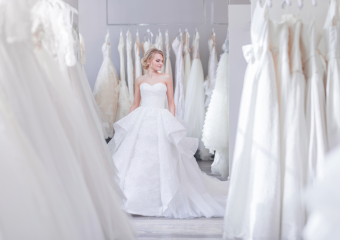From Sketch to Aisle: How AI Is Reimagining Wedding Dress Design
AI Wedding Dress Design is no longer a speculative idea — it’s reshaping how designers, boutiques, and brides collaborate to create one-of-a-kind gowns. By combining generative AI, 3D visualization, and seamless designer integrations, the bridal world is moving toward a visual-first user experience that prioritizes creativity, fit, and efficiency without sacrificing the human touch.
H2: AI Wedding Dress Design: Designer Integrations and Visual-First UX
What makes this transformation different from previous waves of tech adoption is the tight integration between creative tools and production systems. Designers can now plug AI modules directly into their existing workflows — from Adobe Illustrator and CLO 3D to pattern-making software and ERP platforms — enabling a native, visual-first UX where sketches, swatches, drape simulations, and measurement data live in one place. Instead of translating ideas across separate apps, teams iterate visually and collaboratively in real time.
How designer integrations work in practice
- Generative concept engines: Designers input inspiration images, keywords, or sketches and receive multiple style directions, silhouette variations, or embellishment suggestions. These outputs can feed directly into vector or 3D files.
- Pattern-generation plugins: AI can suggest graded patterns tailored to size ranges and fabric behavior, exporting to pattern-making software for cutting and production.
- Fabric and texture mapping: Material databases drive realistic fabric simulation in 3D previews, showing how lace, satin, and tulle will behave under movement and lighting.
- Workroom connectivity: Production-friendly output (cut lists, graded patterns, material quantities) syncs with manufacturing systems to reduce lead times and sample waste.
H3: The visual-first UX — what brides and designers experience
A visual-first user experience centers the image and interaction rather than text-heavy menus or spreadsheets. Typical features include:
- Live 3D previews: Rotate, zoom, and view the gown in motion with realistic drape and lighting.
- AR try-on: Brides can visualize designs on themselves via phone or in-store mirrors before committing.
- Mood-board-driven design wizards: Drag images into a board and watch the AI generate cohesive gowns that reflect texture, era, and silhouette cues.
- Real-time collaboration: Designers, clients, and ateliers annotate the same model, leave comments, and approve iterations visually.
Why this matters: faster ideation, fewer physical samples, and deeper personalization. Brides feel more confident because they can see and tweak details instantly; designers benefit from a more efficient pipeline that preserves craftsmanship while leveraging computational power.
Benefits and business impact
- Personalization at scale: AI enables thousands of variations derived from a core design, so brides get bespoke feels without bespoke time or cost.
- Reduced waste: Virtual sampling and accurate fabric simulation cut down on physical prototypes, a big win for sustainable bridal houses.
- Shorter lead times: Automating repetitive tasks (grading, markup, cut-list generation) shortens production cycles, crucial for off-the-rack and made-to-measure offerings.
- Data-informed creativity: Trend analysis and customer preference models help studios design dresses that resonate with target markets while still allowing room for signature artistry.
Challenges and ethical considerations
- Intellectual property: Who owns AI-generated embellishments or silhouettes derived from existing archives? Clear contracts and provenance records are necessary.
- Preserving craft: AI should augment, not replace, hand-sewn techniques and the tacit knowledge of cutters and seamstresses.
- Bias and homogenization: Overreliance on data-driven trends can narrow aesthetic diversity. Designers must guard against formulaic outputs and ensure unique voices persist.
- Technical adoption barriers: Smaller studios may lack the infrastructure or skills to integrate AI; affordable, modular solutions and training are key.
Practical steps for designers and boutiques
- Start hybrid: Use AI for ideation and sampling, but keep human oversight for final design decisions and fit checks.
- Build curated datasets: Train models on your house archives and labeled materials to maintain brand aesthetic and IP control.
- Prioritize UX: Choose tools with strong visual-first interfaces to make client consultations intuitive — better UX means higher conversion.
- Partner with tech-savvy ateliers: Collaborate with manufacturers that accept digital outputs and can translate virtual designs into high-quality garments.
Tips for brides using AI-driven services
- Bring inspiration but stay flexible: Mood boards help the system understand your taste, but leave room for the designer’s expertise.
- Ask for physical swatches and final fitting sessions: Even the best simulations benefit from tactile confirmation.
- Discuss ownership and privacy: Understand how your images and measurements will be stored and used.
- Use AR as a guide, not gospel: Lighting and body posture affect virtual try-ons; always corroborate with in-person fittings for final decisions.
Looking ahead
AI wedding dress design is poised to enhance creativity, reduce waste, and make bespoke experiences more accessible. The future will likely see deeper real-time collaboration, tighter supply-chain integration, and even more advanced fit prediction through body-scanning and biomechanics. Importantly, the most successful implementations will balance computational speed with human artistry, using AI as a tool to amplify — not replace — the emotional, handcrafted core of bridal fashion.
In short, the next generation of bridal design will be defined by smart integrations and intuitive visual experiences that let designers and brides co-create with clarity and confidence. Those who embrace the hybrid model will unlock new efficiencies without losing the romance that makes wedding dresses so meaningful.





